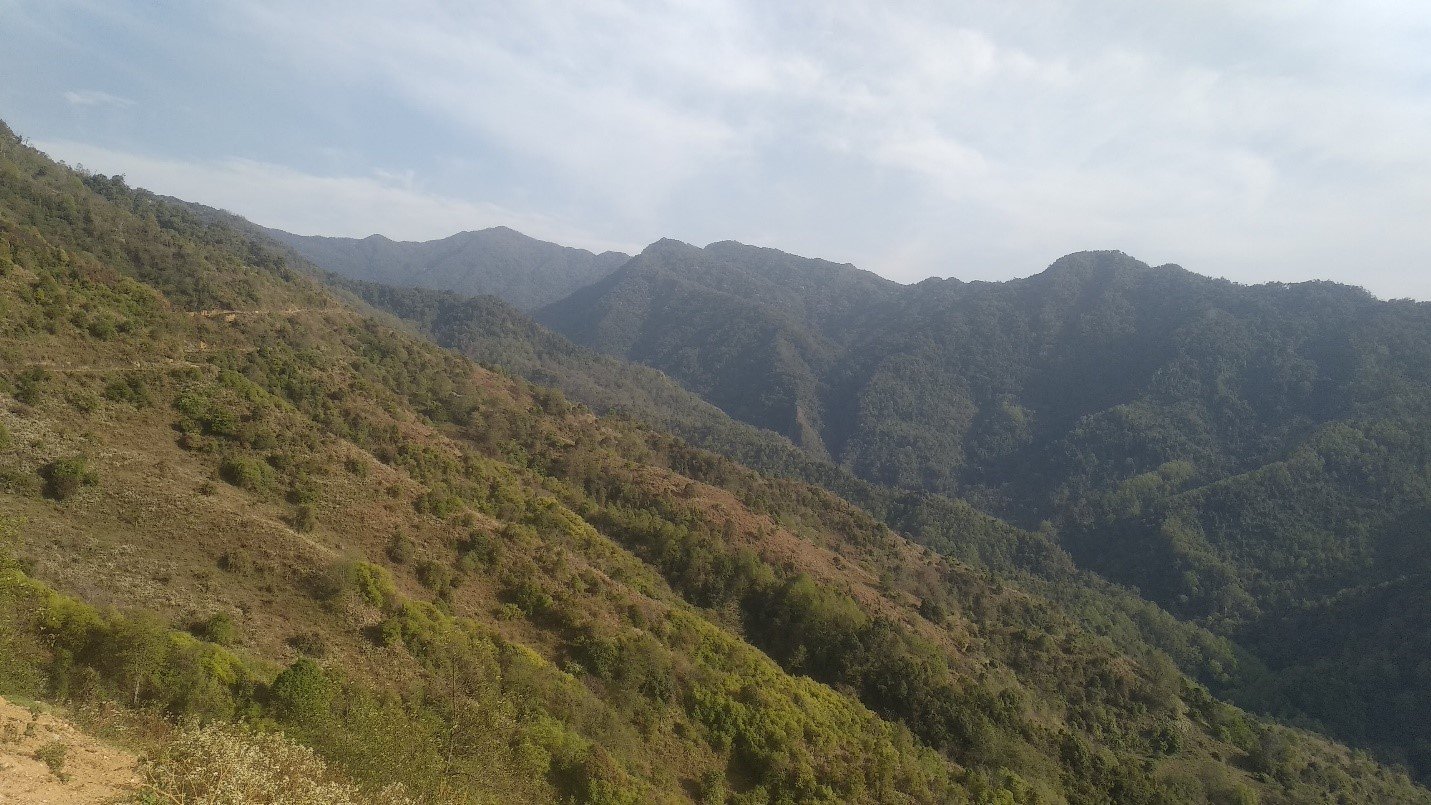Photographs: – Birds – Subhadra Devi (As mentioned in file name as well)
Photographs: – Landscape – Kaushik Sarkar (As mentioned in file name as well)
The author, Kaushik Sarkar, is a wildlife biologist transitioning to the world of conservation action, currently working as a Senior Executive for the On-Ground Projects at The Habitats Trust.
Even before the Milky Way Galaxy disappears from the night sky, bird songs begin from the Jhums of Thanamir, the last village of Nagaland. In the high hills of Nagaland, Thanamir is situated on the ridge that leads to the mighty Mount Saramati, the tallest peak in Nagaland. The village is surrounded by mixed oak forests on one end and valleys and hills dotted with Jhum cultivation (the age-old shifting agricultural practice) on the other.
The Yimkhiung community of Thanamir have valued its wildlife for decades, especially birds, that dictate the community rules that push for conserving the birds around them. Result of such practices reflect in the rich birdlife that exists in the fallow Jhum.

(PC: Kaushik Sarkar)
Fallow Jhum looks like a mosaic scrubland made of grasses, wild roses, and trees of wild cherry among many other herbs and shrubs. The active Jhum have apple and plum orchards, crops of paddy, maize, mustard and vegetables. Birds have managed to thrive in this matrix of fallow and cultivation and I often wonder how did grassland birds reach here, if not for Jhum.
Coming back to the songs, Hoots of Collared Scops Owl and the two-whistle song of Mountain Scops Owl resonate the nights in Jhum. Large Hawk Cuckoo ends the night that the Grey Nightjar’s persistent call started. As the night fades into dawn break, the songs and calls of Brownish-flanked, Russet and Brown Bush Warblers along with prinias start the orchestra where other elements join. Once the fulvettas and babblers are awake, the commotion begins. To observe the commotion, Khorbibi, the Crested Finchbill takes a tall perch and sings. Whiskered Yuhinas, Green-backed Tits, warblers and tailorbirds join this commotion from trees that dot the Jhum. To bring order to the commotion, the Indian Blue Robin and Lesser Shortwing sing a complex, metallic, melodious song. While the orchestra plays, jumping in from the tall grasses are the Spot-breasted Parrotbills, big fellows, loud ones, they hold the space but not the stage.

Little Bunting (L), Himalayan Bluetail (Top R) and Whiskered Yuhinas (Bottom L) PC: Subhadra Devi
While the above, enrich the ears, many more entities enrich the sight like a flamboyant music video. Spectacularly bright specks of red and yellow fly over the valleys, the Scarlet Minivets have arrived as the sun peaks over the hills in the morning. Jumping around and scrounging the bushes of Jhum, come the Silver-eared Mesia and Black-throated Tits joining other fulvettas and babblers making a mixed flock. Then the blue jackets arrive, Himalayan Bluetail and the Blue-fronted Redstart. To add to this star-studded orchestra, are the shiny and bold coloured Green-tailed, Mrs. Gould and Fire-tailed Sunbirds.
And as with any event, some are busy eating. The Common Rosefinch, Little Buntings and Eurasian Tree Sparrows feed on the seeds of mustard, rice and corn in the cultivations, while Grey Bushchat and Grey-backed Shrikes are scanning for prey from perches of apple trees.

Crested Finchbill (PC: Subhadra Devi)
As the birds feed and the orchestra eventually ends, fires in the kitchens of the village have also been lit. The Yimkhiung people are preparing for the day. They eat their meals, carry their equipment and head out singing some other songs to visit the same stage on which the “Song of Jhum” was just played.

Kaushik Sarkar, a wildlife biologist and Senior Executive at The Habitats Trust


